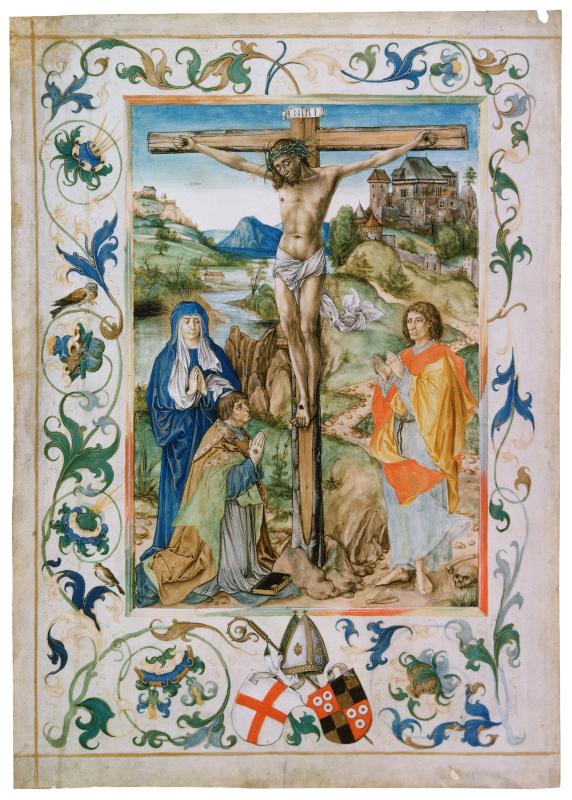
Accession number
MS M.955
Object title
Missal leaf, Canon of the Mass illustration (MS M.955).
Created
Constance, Germany, ca. 1510.
Credit line
Purchased as the gift of the Fellows, with the special assistance of four members of the Board of Trustees, Mrs. Gordon S. Rentschler, and Mrs. G.P. Van de Bovenkmap (Sue Erpf Van de Bovenkamp) in memory of Armand G. Erpf, 1973.
Description
1 single leaf : vellum, ill. ; 407 x 289 mm
Provenance
Hugo von Hohenlandenberg (1460-1532), bishop of Constance (1496-1529, 1531-1532), who commissioned the four-volume missal; volume 1 was sold in Geneva in 1832, and was dismembered; eleven of its leaves are privately owned, but some of them are on loan to the Rosgarten Museum in Constance. The other three volumes, all intact except for a few excised leaves, have been in the Erzbischöfliches Archiv, Friburg im Breisgau since 1928 (Da 42 2, Da 42 3, and Da 42 4). The leaf that is now identified as Pierpont Morgan Library. MS M.955 made its way to England, where it was part of Alfred Morrison's (1821-1897) collection; then it descended to Lord Margadale of Islay, F.D., who sold it in London, Christie's, Mar. 20, 1973, lot 115; the present location of the Te igitur initial which originally faced the Crucifixion is unknown.
Notes
Ms. missal leaf with the Canon of the Mass illustration; written and illuminated in Constance, Germany, ca. 1500.
Decoration: 1 full-page miniature with floral border containing a coat-of-arms: Crucifixion in a landscape with Mary, John, and the donor, Bishop Hugo von Hohenlandenberg (1460-1532), kneeling at the foot of the cross. The miniature has been attributed to Springinklee der Ältere, the postulated father of the illuminator Hans Springinklee (see Merkl 1999, p. 361).
Decoration: 1 full-page miniature with floral border containing a coat-of-arms: Crucifixion in a landscape with Mary, John, and the donor, Bishop Hugo von Hohenlandenberg (1460-1532), kneeling at the foot of the cross. The miniature has been attributed to Springinklee der Ältere, the postulated father of the illuminator Hans Springinklee (see Merkl 1999, p. 361).
Resources
Century
Catalog link
Classification
Department
